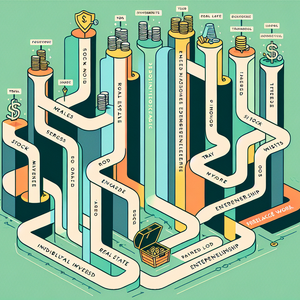In Defense of Sandwich Mistrust

At its core, sandwich mistrust often stems from the sandwich’s defining characteristic: its ability to obscure its contents. Unlike a plated meal, where each ingredient is visible and identifiable, a sandwich presents a mystery. It hides flavors, textures, and surprises between two slices of bread. For some, this concealment can trigger anxiety, rooted in the fear of encountering an unwanted or unexpected ingredient. Is there mayonnaise lurking beneath the lettuce? Are there pickles hiding under the cheese? For the sandwich-averse, this uncertainty feels less like a culinary adventure and more like a betrayal waiting to happen. Psychologically, this aversion can be tied to the human need for control. A study published in *Appetite* (2015) highlights how individuals with heightened food neophobia—a fear of trying unfamiliar foods—prefer meals where ingredients are clearly visible. Sandwiches, by their nature, challenge this preference. The hidden fillings, often layered unpredictably, create an eating experience that feels like an unwelcome gamble. For someone with a strong desire to know exactly what they are consuming, the sandwich’s opacity is not appetizing—it is unsettling. This distrust isn’t always rational. Even when assured of a sandwich’s contents, a mistrustful eater might still hesitate. This is because the sandwich, for them, symbolizes uncertainty. It’s not just food; it’s a metaphor for the unexpected—and the unwelcome.
Cultural Perspectives on “Hidden” Foods
Beyond individual psychology, sandwich mistrust is also shaped by cultural norms and food traditions. Not all cuisines embrace the idea of concealing ingredients within layers. For instance, Japanese cuisine often emphasizes visual harmony and transparency. Dishes are meticulously arranged to showcase each ingredient’s appearance and texture. The culture celebrates clarity and openness in food presentation, making the concept of a sandwich—with its hidden fillings—feel alien or even unappealing. Compare this to Western cuisine, where sandwiches are celebrated for their versatility and convenience. In the United States, the sandwich is a lunchtime hero, often packed with a dizzying variety of fillings. In Italy, panini are revered but tend to be simpler and more open-faced. Meanwhile, France’s baguette sandwiches embrace minimalism, often featuring just a few high-quality ingredients. Yet, even these pared-down versions might not appeal to someone with sandwich aversion. For them, the act of hiding food within food feels like a cultural disconnect—a gamble they’d rather avoid. This divide speaks to how food reflects cultural attitudes toward trust and identity. In societies where transparency in food is highly valued, the sandwich’s opacity may trigger discomfort. Conversely, in cultures that embrace efficiency and portability, the sandwich symbolizes practicality and innovation.
The Broader Societal Implications
Sandwich mistrust may seem trivial, but it mirrors larger societal anxieties. The sandwich, with its hidden complexity, can be seen as a metaphor for modern life. As society has grown more fast-paced and industrialized, the sandwich has emerged as a convenient solution for on-the-go meals. However, this convenience comes at a cost: the sacrifice of transparency. For some, the sandwich represents a world that prioritizes speed over authenticity, efficiency over clarity. This mistrust also taps into universal fears of the unknown. In a world where information is often incomplete or unreliable, the sandwich’s hidden layers evoke a discomfort with uncertainty. It’s not just about what’s inside the sandwich—it’s about what else in life might be concealed. Interestingly, this theme of mistrust aligns with broader cultural trends. Consider the rise of “clean eating” movements and the demand for ingredient transparency in food labeling. These shifts reflect a growing desire to know exactly what we’re consuming—a desire that’s fundamentally at odds with the sandwich’s enigmatic nature.
Bridging the Divide: Solutions for the Sandwich-Averse
For those who struggle with sandwich aversion, navigating a sandwich-loving world can feel isolating. However, there are ways to bridge the divide. Customization is one solution. Many restaurants now offer build-your-own sandwich options, allowing customers to choose every ingredient and eliminate unwanted surprises. This level of control can make sandwiches more approachable for skeptics. Another approach is transparency. Open-faced sandwiches, popular in Scandinavian cuisine, remove the element of mystery altogether. By presenting the ingredients on top of the bread, these sandwiches allow diners to see exactly what they’re eating. For others, the solution might involve rethinking the sandwich entirely. Deconstructed sandwiches, where the bread, protein, and vegetables are served separately, cater to those who prefer clarity. This approach not only accommodates sandwich mistrust but also challenges the notion that food must conform to predefined categories.
Sandwich mistrust, though seemingly odd, opens the door to meaningful discussions about food, culture, and psychology. It challenges us to consider how our culinary preferences reflect deeper fears and values. For some, the sandwich represents comfort and efficiency; for others, it symbolizes uncertainty and hidden complexity. Both perspectives are valid—and both enrich our understanding of food as a cultural and psychological phenomenon. Ultimately, the sandwich invites us to think critically about what we consume and why. Whether you embrace it or avoid it, the sandwich is more than just a meal—it’s a reflection of who we are. So, the next time you encounter a sandwich, take a moment to appreciate its layers, its complexities, and its ability to spark conversations. And for those who mistrust sandwiches, remember: food is deeply personal, and there’s no one right way to eat.
Food Anthropologist
Universities, cultural research institutes, food-focused non-profits, or culinary media organizations
Core Responsibilities
Study and document how food practices reflect cultural identities, values, and societal behaviors.
Analyze the psychological and emotional connections between people and their eating habits, including aversions like sandwich mistrust.
Conduct fieldwork to explore food traditions and the symbolism behind culinary practices globally.
Required Skills
Strong research and ethnographic skills to observe and interpret cultural food practices.
Knowledge of psychology and sociology to assess food behaviors in different contexts.
Excellent communication and writing skills for publishing findings in academic or public forums.
Unique Qualifications
A degree in anthropology, sociology, or cultural studies with a focus on food, and a curiosity for uncovering the deeper meanings behind everyday eating habits.
Sensory Food Scientist
Food and beverage companies, research labs, or culinary innovation startups
Core Responsibilities
Research how sensory experiences—taste, texture, smell, and appearance—influence consumer trust in food products.
Develop and test new food designs that reduce consumer anxieties, such as transparent or deconstructed meals.
Collaborate with product development teams to enhance the eating experience while addressing psychological concerns like food neophobia.
Required Skills
Expertise in sensory evaluation techniques and food chemistry.
Analytical thinking to interpret consumer feedback and translate it into actionable product improvements.
Creativity in designing foods that meet both functional and emotional needs.
Unique Qualifications
A degree in food science or sensory studies, along with experience in consumer behavior analysis and product testing.
Transparency Advocate for Food and Beverage Industry
Consumer advocacy organizations, regulatory agencies, or progressive food companies
Core Responsibilities
Work with food brands to improve ingredient labeling and visual transparency in product presentation.
Collaborate with marketing teams to craft messaging that builds consumer trust through openness and honesty about food contents.
Educate consumers on the importance of clear labeling and advocate for industry-wide standards.
Required Skills
Strong understanding of food regulations and labeling laws.
Excellent advocacy and communication skills to influence both consumers and policymakers.
Ability to identify market trends, such as the rise in demand for clean eating and ingredient transparency.
Unique Qualifications
A background in food policy, marketing, or public health, with a passion for empowering consumers to make informed choices.
Culinary Innovation Specialist
High-end restaurants, culinary schools, or food innovation labs
Core Responsibilities
Develop creative menu options that cater to diverse consumer preferences, including those who value ingredient visibility.
Experiment with deconstructed dishes, open-faced sandwiches, and other transparent food presentations to attract niche audiences.
Lead workshops or training sessions for chefs on designing meals that address psychological food aversions.
Required Skills
Expertise in culinary arts and food design, with an emphasis on aesthetics and functionality.
Knowledge of dietary psychology and how to create foods that balance comfort and innovation.
Strong leadership and teaching skills to inspire creativity in kitchen teams.
Unique Qualifications
A culinary degree combined with a strong understanding of food psychology and the ability to cater to unconventional dining preferences.
Behavioral Food Consultant
Food consultancy firms, wellness organizations, or private practice
Core Responsibilities
Provide insights into consumer eating behaviors and help brands or restaurants design products that accommodate food aversions or preferences.
Work with psychologists and dietitians to develop strategies for overcoming food anxieties, such as sandwich mistrust.
Conduct workshops or sessions for individuals or groups to address food-related fears and foster positive relationships with eating.
Required Skills
Deep understanding of psychology, particularly as it relates to food and behavior.
Strong interpersonal skills for working closely with clients and stakeholders.
Research and analytical abilities to assess food trends and consumer responses.
Unique Qualifications
A background in psychology or behavioral science, combined with knowledge of culinary trends and consumer insights.


